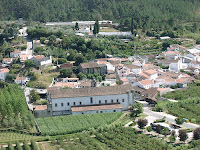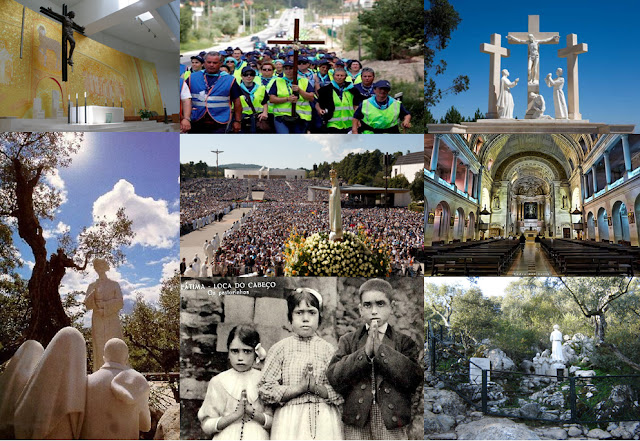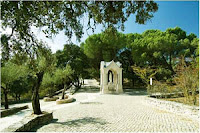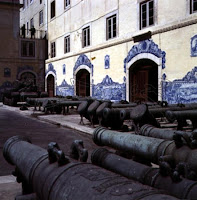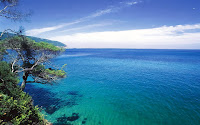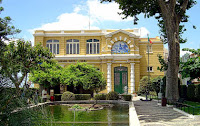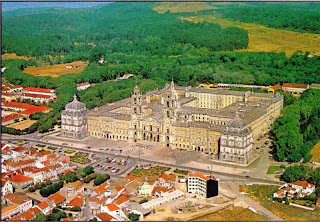segunda-feira, 5 de março de 2012
What you need to know about... ALCOBAÇA
Mosteiro Santa Maria de Alcobaça is a Mediaeval Roman Catholic Monastery ( one of the first foundations of the Cistercian in Portugal - 1153 ). The Monastery of Alcobaça became the main house of Cistercian moonks who dedicated theirs lives to religious meditation. Classified in UNESCO's International Heritage list , Monastery is an important witness to the evolution of Portuguese architecture.
Convento de Cós also known as Monastery of Santa Maria de Cós is located in Cós. Its origins go back to the 12th century. The convent was built to accommodate the widows who wanted to lead a religious life. The church is classified as a Public Interest since 1946.
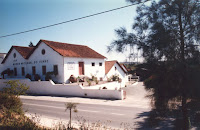
Museu Nacional do Vinho : This museum is housed in the old wine cellar built in 1875 by José Eduardo Raposo de Magalhães, an important wine producer of that time. He had built the winery with the most advanced technology.
Museu Monográfico do Bárrio is a testimony of human occupation that extends between the 1St/4th centuries. The museum houses a collection which reflects the course of a day of rural population of that time (Romans) .
S. Martinho do Porto : The beach has a great affluence of domestic and international tourism. You can appreciate the fine sand and the dune vegetation which have here an expression unique . In other words, a perfect place for nature lovers.

Vale da Ribeira do Mogo is a valley with typical mediterranean vegetation. This site was the habitat of the emblematic lince ibérico, but deforestation and the isolation made it impossible to stay in this area.
sábado, 25 de fevereiro de 2012
What you need to know about... FÁTIMA
 Portugal has a notable sanctuary that offers an unforgettable spiritual journey. Fatima is a center of Christian faith, an important destination for pilgrimages. The sanctuary welcomes millions of pilgrims and tourists from all over the world to see where the three children (Lúcia, Francisco and Jacinta) saw a vision of the Virgin Mary(1917). The place became a most important Catholic pilgrimage site, attracting thousands of pilgrims each year most particularly every May 13 and October 13, the most significant dates of the apparitions.
Portugal has a notable sanctuary that offers an unforgettable spiritual journey. Fatima is a center of Christian faith, an important destination for pilgrimages. The sanctuary welcomes millions of pilgrims and tourists from all over the world to see where the three children (Lúcia, Francisco and Jacinta) saw a vision of the Virgin Mary(1917). The place became a most important Catholic pilgrimage site, attracting thousands of pilgrims each year most particularly every May 13 and October 13, the most significant dates of the apparitions.
Here, pilgrims renew their faith!

Igreja da Santissima Trindade ranked as the fourth largest Christian church in the world, the church accommodates nearly 9000tourists. Pope John Paul II donated the first stone, a piece taken from the tomb of Apostle Peter.
Capela das Aparições: the true heart of the sanctuary. The exact place where the Virgin appeared to the children is marked by a marble column n which is placed a sculpture of the Virgin.
Muro de Berlim (The Berlin Wall - at the entrance of the Sanctuary) was created in recognition of God's will for the collapse of communism, a promise made by the Virgin for Fátima on that spot. In Aljustrel, you can also visit the homes of the little shepherd largely unchanged in 80years, just over 3 km from fátima. It's a good chance to see what life was like in those times in Portugal.
Museu de Cera (Was Museum - Sacred Art) is a great way to learn the story of the apparitions of the three shepherd children in Fátima. It serve as a visual aid to understand the history of this pilgrimage area.
In Aljustrel, you can also visit the homes of the little shepherd largely unchanged in 80years, just over 3 km from Fátima. It's a good chance to see what life was like in those times in Portugal.
Valinhos (3km from the santuary): 4th place of the apparition of Our Lady, marked by a monument. Via Sacra is made of 14 chapels in memory of the passion of our Lord and a 15th corresponding to the Ressurrection.
terça-feira, 21 de fevereiro de 2012
What you need to know about... ÓBIDOS

Obidos is like seeing a postcard. This medieval village is one of Europe's best conserved walled villages. It's certainly one of Portugal's most visited places, but its authenticity hasn't been ruined by tourism. You can walk around its walls for the best views and photos. At the end of your journey, try the illustrious local drink, the "Ginjinha" (cherry liqueur), frequently served in a chocolate glass.
Castelo de Óbidos was built in the 12th century by king Afonso Henriques after conquering the town from the Moors. The ex- palace inside the castle walls has been transformed into a pricey Pousada providing great accommodation for tourists. From here are fine views of the city and surrounding area.
Museu Municipal de Óbidos exhibits arqueological painting and sculpture, religious art and armory (15th/18th centuries) . There is a part dedicated to the town of Obidos, which tells of the history of the place through various objects. We can also see some objects found in excavations of a Roman city , near the town of Óbidos.
The Igreja de Santa Maria is a stunning church presumed as a Visigothic construction. The church was transformed in a mosque by arabs . After Christian conquering, the king dedicated this church to Santa Maria. It was reconstructed in the 15th century with a different style: Renaissance (acquiring the look that still keeps). Apparently this church is also famous for having held the wedding of the 10 year old king Afonso V and his 8 year old cousin Isabel in 1444. Due to the aged and historic interior art and decoration no photo taking is allowed . However, you can take photos without a flash (secretly!!!)
Oratório Nossa Senhora da Piedade, a 17th century balcony with a beautiful panel made with white tiles painted in blue (called azulejos), those tiles date from the 18th century. This place is an Oratory . Here you can also admire some typical lamps made in iron.
Festivals: Obidos is also the stage of several of Portugal's most popular festivals. Festival Internacional do Chocolate ,one of the biggest and most significant event organized in Óbidos. Every year, visitors come to Óbidos for a only reason: To enjoy the most popular ingredient of the world. Feira Medieval is an annual ( each year on july) historical reenactment event organised in this lovely city. For a modest entry fee you are invited to an afternoon of street parades, jousting, music and food. Vila de Natal attract thousands to its streets. The festival attractions include a labyrinth, cart circuit, a very short and slow slide, games, toy factory, Santa Claus…
domingo, 19 de fevereiro de 2012
What you need to know about... SETÚBAL
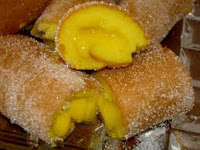 The town of Setúbal is attractive with many pedestrian streets, gardens and interesting shops. Relax on quiet beaches listening to the calm waves of the estuary and the sounds of birdlife in the vegetation. The natural splendor and regional produce are there waiting for you. This quaint wee village has a local specialty: “ Tortas de Azeitão “, washed down with a little drop of "Licor de Moscatel ". Given the opportunity, one would be a fool to miss out on the octopus salad and "Chocos Fritos " (fried cuttlefish).
The town of Setúbal is attractive with many pedestrian streets, gardens and interesting shops. Relax on quiet beaches listening to the calm waves of the estuary and the sounds of birdlife in the vegetation. The natural splendor and regional produce are there waiting for you. This quaint wee village has a local specialty: “ Tortas de Azeitão “, washed down with a little drop of "Licor de Moscatel ". Given the opportunity, one would be a fool to miss out on the octopus salad and "Chocos Fritos " (fried cuttlefish).
I think you will agree with me that Setubal has many great things for you to experience!
The Museu de Setúbal has many religious items and paintings. This museum houses collections related to art, history, archeology. Part of the collection is dedicated to the famous 18th Century Portuguese romantic poet Bocage.

The Museu de Arqueologia e Etnografia has a varied and fascinating compilation of items discovered in the immediate region, from Bronze Age pots to the processing of cork.

In the 16th Century, Castelo de São Filipe was constructed to protect the port from passing marauders and it has now been turned into an attractive luxury Pousada for the benefit of the many temporary tourists.
The Museu Nacional Militar is one of the best military museums of the World. The majority of the artifacts in Museu Militar are really unique. The museum armory is small but posses the completely unique and very rare examples of medieval arms and armor starting from 15th century. You can get extra knowledge about Portugal and its glorious history.

Museu do Trabalho de Michel Giacometti : This wonderful and exclusive museum in Portugal is set in a previous Sardine Factory. Setubal once had many of these but they have all closed . This museum also has various temporary exhibitions representing cottage or household industries.
Blue Coast Bikes Day Tours offers a variety of bike tours, ranging from single day to multi-day tours across different regions of Portugal. You'll see parts of the area rarely visited by tourists and to learn about the history and traditions of Portugal.
Parque Natural da Arrabida, one of the premium places in Portugal. Take your time to climb to the top and see Lisbon and Setubal and enjoy the splendid sights that a clear day can offer. Come down and rest on several small white sandy beaches and blue water . The Park Natural da Arrábida is the jewel of Setúbal.
On the South is the Peninsula de Troia accessible in 12 mins by ferry. Troia Is a holiday village having high rise buildings which are observable from distant places. Miles of Atlantic beaches, golf courses, hotels great for families with kids, and the ruins of the Roman period .
quinta-feira, 16 de fevereiro de 2012
What you need to know about... CASCAIS

The area of Cascais-Estoril is known for its wealth of attractions ( national heritage , beauty and natural interest ) . This means that this area is very popular not only for overseas visitors but also by the Portuguese tourists. In Cascais you will find one of the most beautiful tourist routes of the Portuguese coast . I know that you enjoy good times.Ah! Don’t Forget! You should not leave without tasting one of the best ice cream of Portugal (in Gelataria Santini).
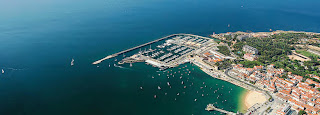 Marina de Cascais has a capacity for 600 boats, this site usually hosts a large number of luxury yachts. The marina de Cascais has been increasingly sought as a place of major events nautical, national and international. It is the place where celebrities from many countries come to rest and spend their holidays with their family. Marina also offers a wide range of infrastructure for lovers of sea and seamanship.
Marina de Cascais has a capacity for 600 boats, this site usually hosts a large number of luxury yachts. The marina de Cascais has been increasingly sought as a place of major events nautical, national and international. It is the place where celebrities from many countries come to rest and spend their holidays with their family. Marina also offers a wide range of infrastructure for lovers of sea and seamanship.
Boca do Inferno means 'devils mouth' and is basically an interesting rock formation. Here is the perfect place to admire and contemplate the beautiful blue ocean. You have a fantastic image when red cliffs come into contact with the blue sea...you can imagine, it is a unique landscape!
The Cidadela de Cascais is an extension of the Fortaleza da Luz and is the only part of the monument that you can visit. It was here that stood the 'Hospital of the Soldiers', considered the best equipped infirmary across the Portuguese military history.
Parque Natural de Sintra - Cascais features an amazing variety of environments and landscapes, including sand dunes, forests, lakes, coastline where high cliffs are interspersed with amazing beaches.
Aquário Vasco da Gama : Visitors can observe animals in captivity whose maintenance is very hard or not possible, such as rare species. In the aquarium, the exposure of living offers a true and real dynamics of the underwater world.
The Museu do Automovel Antigo features a collection of old cars and bicycles that illustrate the development and history of cars over the 20th century. This museum also hosts regular temporary exhibitions.
The Museu da Música portuguesa came from a collection of musical instruments popular Portuguese (20th/21th centuries). It is a museum with various figures of culture, concert programs, beyond research elements as collection forms of music and oral tradition documents, recordings
We can’t forget the biggest casino in Europe and one of the most glamorous, Casino Estoril ! You’ll find the elite of Lisbon, big cars and a unique architecture! Prepare to get unforgettable moments!
domingo, 12 de fevereiro de 2012
What you need to know about... MAFRA
Scenery for several movies, Mafra stands out because of its unique features: the magnitude of its history; the luxury and diversity of its natural heritage and also the culture and traditions that reflect the way of life of its population. It is a place and an opportunity you will not want to miss …So, DISCOVER MAFRA!
Palácio Nacional de Mafra or Convento de Mafra is one of the best examples of display of the richest reign in the history of Portugal. D.João V (in the 1700s) has vowed to build a monastery (it is the largest Portuguese religious monument) as a proof of gratitude for the birth of an heir to the throne. In all, 52,000 men worked on the monument which, when finished, had the capacity to receive 330 monks, including the royal residence and one area of the richest libraries of Europe, which houses about 36.000 collectors books.
 Following the construction of Convento de Mafra, D. João V created Tapada Nacional de Mafra as a place of entertainment and leisure for the King and his Court. Today it stands out as a natural patrimony of unique features with an area of over eight hundred hectares completely enclosed by the original wall, 21 km long. The forest covers most of the ground, home to deer, wild boar, and several other species of flora and fauna.
Following the construction of Convento de Mafra, D. João V created Tapada Nacional de Mafra as a place of entertainment and leisure for the King and his Court. Today it stands out as a natural patrimony of unique features with an area of over eight hundred hectares completely enclosed by the original wall, 21 km long. The forest covers most of the ground, home to deer, wild boar, and several other species of flora and fauna.
José Franco is one of Portugal's most well-known craftsmen. At his residence, he exhibits a programmed model, in miniature, of a traditional Portuguese village with the daily responsibilities which occupied people. It is a journey into a world lost in time but immortalized here by this man.
Centro de Recuperação do Lobo ibérico was created in 1987 and is projected to sensitize people for the conservation of its species. Here you can see more than two tens of wolves . The more sociable animals will approach the nets.
Subscrever:
Mensagens (Atom)


